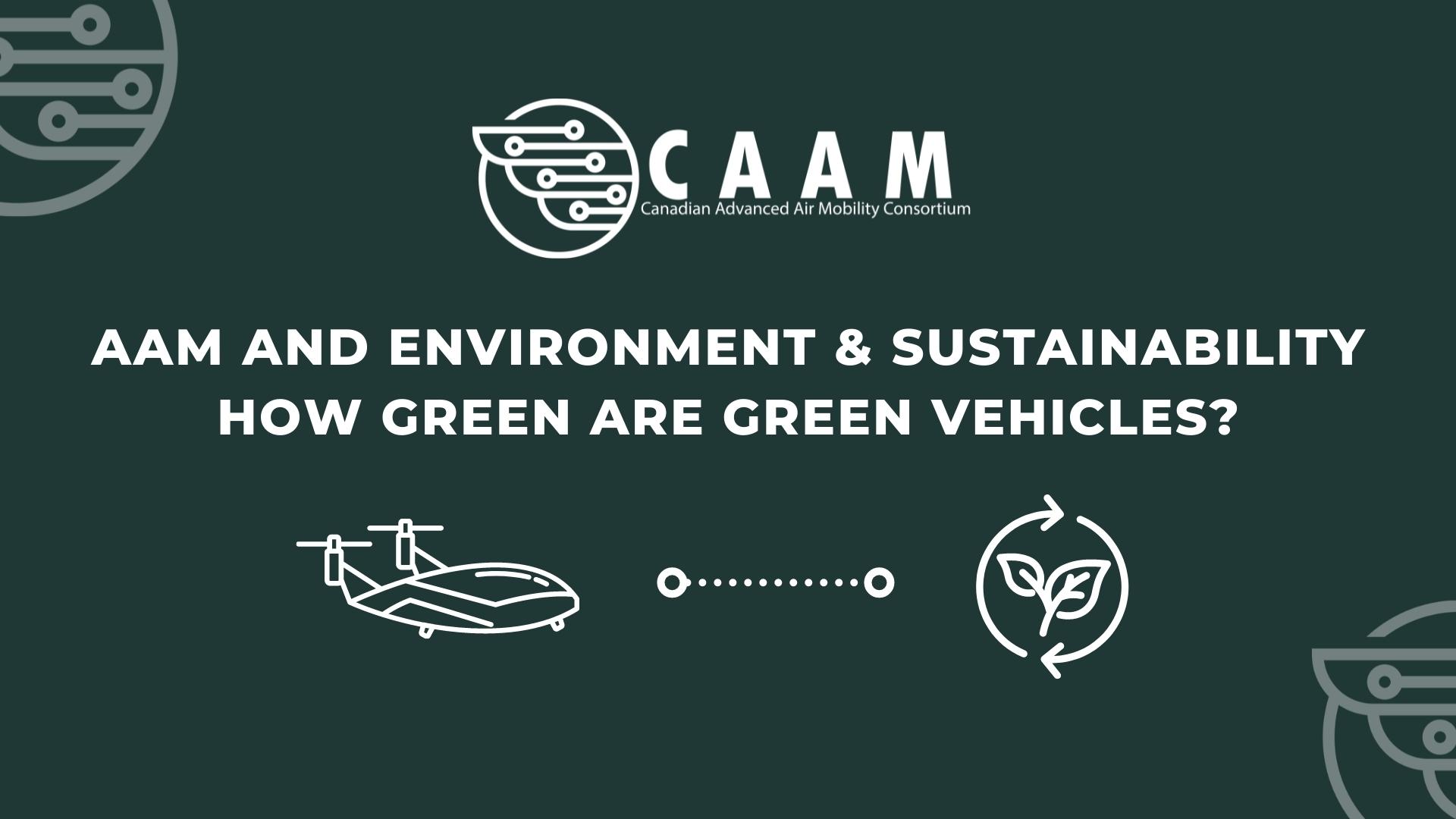 One major challenge regarding Advanced Air Mobility (AAM) is the novelty aspect of the field. While there is much information regarding other electric vehicles, such as cars, there isn’t much on aircraft—understandably so, because all-electric aircraft aren’t commercially available yet. But that doesn’t mean that first, there is no information at all, and second, that there’s no margin to extrapolate and imagine what the future of aviation can look like.
One major challenge regarding Advanced Air Mobility (AAM) is the novelty aspect of the field. While there is much information regarding other electric vehicles, such as cars, there isn’t much on aircraft—understandably so, because all-electric aircraft aren’t commercially available yet. But that doesn’t mean that first, there is no information at all, and second, that there’s no margin to extrapolate and imagine what the future of aviation can look like.
AAM and Environment & Sustainability: How green are electric vehicles?
As Hiroko Tabuchi and Brad Plumer answer in their New York Times article, “In short: Very green. But plug-in cars still have environmental effects.”
An all-electric Chevrolet Bolt, for instance, can be expected to produce 189 grams of carbon dioxide for every mile driven over its lifetime, on average. By contrast, a new gasoline-fueled Toyota Camry is estimated to produce 385 grams of carbon dioxide per mile. A new Ford F-150 pickup truck, which is even less fuel-efficient, produces 636 grams of carbon dioxide per mile.
But that’s just an average. On the other hand, if the Bolt is charged up on a coal-heavy grid, such as those currently found in the Midwest, it can actually be a bit worse for the climate than a modern hybrid car like the Toyota Prius, which runs on gasoline but uses a battery to bolster its mileage. (The coal-powered Bolt would still beat the Camry and the F-150, however.)
Tabuchi and Plumer
While charging an electric car through a coal-heavy grid is far from ideal, at least it’s still better than having an all-fossil-fuel vehicle. The good news is that the world is moving toward a clean electric grid, and as Dr. Fatih Birol, Executive Director, International Energy Agency (IEA), states in the Canada 2022: Energy Police Review, Canada is among the leading countries when the conversation regards clean energy,
In particular, I was impressed by the leadership shown by Canada at COP26. This came through in its more ambitious targets for cutting carbon emissions and its participation in the Global Methane Pledge, underlined by Canada’s commendable commitment to reduce methane emissions from oil and gas operations by 75% by 2030, as recommended in recent IEA analysis. Notably, Canada has promoted a people-centred approach to its clean energy transition, including initiatives to promote gender equity in clean energy sectors, programmes to increase access to clean energy in northern, remote and Indigenous communities, and actions to enable just transitions for fossil fuel workers.
Canada’s electricity supply is among the cleanest in the world, thanks largely to the dominance of hydropower and the important role of nuclear. Greater interconnections among provinces and territories can ensure balanced progress towards national goals for decarbonizing the power sector. Steeper emissions reductions are still needed in other sectors, notably oil and gas production, transport and industry. To this end, Canada has focused its efforts on a number of technologies, including carbon capture, utilization and storage; hydrogen; and small modular nuclear reactors, to serve as a supplier of energy and climate solutions to the world.
More importantly, the commitment of the Government of Canada is to keep leading the way for clean energy while also speeding up the future,
We have committed more than $100 billion toward climate action and clean growth since 2015, including significant investments in clean power, energy efficiency, industrial decarbonization, clean technology and transportation. We also have a world-leading price on pollution and action plans for promising technologies like hydrogen and small modular [nuclear] reactors.
Our Government recently committed to new measures to accelerate the clean energy transition, including requiring the oil and gas sector to be net-zero by 2050 and setting interim five-year targets; requiring oil and gas companies to reduce methane emissions by at least 75 percent below 2012 levels by 2030; creating a 100-percent net-zero electricity system by 2035; providing support for domestic procurement of clean Canadian technology.
The Honourable Jonathan Wilkinson, Canada’s Minister of Natural Resources, Canada 2022: Energy Policy Review
All that is to say that green vehicles may not be the perfect option yet, but technology and energy supply are getting there and even while not there yet, the halfway point already beats the alternative.
How green are aircraft?
Since AAM and AAM aircraft are novelties, there’s no definitive answer yet. But there are some reasonable indications that the future can be zero-emission. Batteries work the same way regardless of what they’re energizing—or propelling, in this case. So if a car can be zero-emission, an aircraft can be too.
And that’s something that the AAM industry believes firmly; as Roei Ganzarski, CEO, magniX, stated in 2020, “This first flight of the eCaravan [Cessna 208B Grand Caravan] is yet another step on the road to operating these middle-mile aircraft at a fraction of the cost, with zero emissions, from and to smaller airports.”
And magniX isn’t only working with Cessna’s; they are a partner of B.C.-based airline Harbour Air. The two of them, along with H55, aim to retrofit the entire fleet by 2022.
So “how green are green vehicles?” Very green; furthermore, as grids become cleaner and technology advances, they’ll become greener and greener.
By Giovani Izidorio Cesconetto



